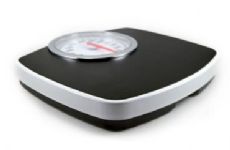Exercising isn’t always pretty—the sweat, the matted down hair, the locker rooms—but it’s definitely worthwhile! Whether you are just starting out or returning after a long break, there are a few things no one ever really tells you about exercise. Even you regular gym bunnies might learn a thing or two from this list—oh how I wish someone had told me these when I started working out!
When you can expect them, and know what to do about them, you'll have fewer barriers and hiccups along your exercise journey.
You are going to need a good laundry strategy.
Exercise means working up a good sweat, which is great for your body and mind (and according to some, your skin). This means you’ll end up with some pretty dirty laundry, too. You may find that the laundry routine you are accustomed to just doesn’t cut it for your sweaty duds. Here are a couple of laundry tips that have saved me—and my often expensive technical workout duds—over the years:
- Don’t toss sweaty, wet clothes into the hamper till your next wash. Bunched up, balled up wet clothes is a recipe for mildew (in addition to the bacteria already in the wet clothes from your skin). If you just can’t wash them right away (and really, who wants to do laundry that often!), lay clothes out over the tub or on a drying rack to dry out before throwing them in the hamper.
- Pre-soak in a vinegar solution. Soak seriously soiled, stinky items in vinegar (use one part vinegar, three parts warm or hot water) for about 15-30 minutes before washing.
- Banish odors with baking soda. I find that my skin gets irritated if I use special soap or even heavy duty "performance" detergents, but one of the best (and least expensive) odor removers I’ve found is baking soda! Depending on the size of your load, add up to 1/2 cup of baking soda to the wash, and use the hottest water your fabrics can withstand (see next tip below).
- Read the care label. Different sweat-wicking and performance fabrics require different care; some can’t be washed in hot water, others can't be bleached and some shouldn't be tossed in the dryer. (As a general note, liquid fabric softener is generally a no-no on all performance fabrics.) So be sure to follow the instructions on your favorite outfit to extend its lifespan. I recommend hang drying, too. It'll extend the life of your pricey workout clothes, especially those that have any bit of "stretch" to the fabric.
Bounce happens.
It’s happened to almost everyone at some point: you are exercising, moving and grooving, and well, things start bouncing around. It's awkward. It's uncomfortable. And it’s normal. While it’s OK that certain things bounce a bit as you move your body, there are certain parts that you want to support during bouncing to avoid discomfort.
That’s why it’s really important to find the right sports bra and some exercisers may find that wearing compression clothing helps reduce some wiggling and jiggling. Men who normally wear boxers may even prefer a tighter boxer brief or even tighter "tighty whities" during exercise as well. The bottom line is that you want to support the parts that need it, but don’t feel embarrassed or self-conscious if you notice this during your workouts. It happens to everyone!
There’s chafing.
Regular workouts can offer a ton of positive side effects (like weight loss, increased energy, stamina, and stronger muscles), but chafing isn’t one of them! Chafing, even blisters, can occur because of friction caused by either body parts (like the inner thighs or underside of arms) or clothing rubbing against your skin during repetitive movements. Although chafing can be common in endurance sports, it can happen in a short workout, too.
Wearing the right exercise clothing for your workout can help. Sometimes loose shorts can cause chafing, for instance, during walking or jogging but a tighter fitted bottom does the trick. You can also use anti-chafing cream or gel (you'll find it at running stores, sporting goods stores and drug stores).
Your weight may fluctuate because of your workout.
Did you know that your "scale weight" can go up or down by as much as 10 pounds each day simply because of the amount of fluid in your body? While using the scale can be a good way to measure your weight-loss progress, don’t get too excited (or scared!) if you see a major jump in either direction after a workout. Try weighing yourself at the same time each day (or week), and preferably before your workout for a more accurate number. And remember, this "scale weight" is not your true weight. It doesn't mean you've suddenly incinerated 5 pounds of fat because you worked so hard. The loss is mostly due to fluids and will come right back on as soon as you rehydrate—and that's a good thing.
Similarly, many people experience a sudden increase in their scale weight then they adopt a new exercise plan. This causes many exercisers to freak out that they are gaining weight. But often this "gain" is also a temporary, fluid-related change in weight. Learn more about how exercise can cause temporary weight gain.
There’s a learning curve for everyone.
It may come as a shock to hear this, but no one is born with the innate knowledge of how to program a treadmill, use the leg press machine, zoom through Zumba class without missing a beat, or swing a kettlebell in perfect form. Those folks at the gym executing those snatches and cleans with grace and skill weren’t born had to learn those techniques first. Just like you.
Don’t let a lack of knowledge or fear of embarrassment intimidate you. Know that everyone at some point had a "first workout" and probably also struggled to learn a new technique or style. But they kept at it. They learned and asked questions and even messed up along the way. At the beginning of my fitness journey, I could only do 10 minutes of cardio at a time without wanting to die! We've all been there. No one is judging you. In fact, many would be happy to share the tips and knowledge they gained if you'd only ask.
Knowledge is power! Don’t let any of these things keep you from wanting to workout. Just keep them in mind as you start (or continue) exercising to help make your journey a little easier.
|
|

















.jpg)



